1. Introduction
Every individual dresses as per his or her constitution. A Tama predominant person wears clothes with gaudy colours and weird designs. This makes the person extroverted and fickle-minded. A Raja – predominant person makes variations in his attire and it is artistic. This creates restlessness and agitation in the person. A Sattva – predominant person wears sober clothes of sattvik colours like white, pale yellow, blue, pink, etc. with minimal designs. There is not much variation in the tailoring of its clothes. Simple attire with minimum of stitching appeals to everyone. Everyone feels close to a person that wears such attire. With this, the person gains stability of mind and peace.
Western attire such as jeans, T-shirt, chudidar, salwar kurta, have become an inseparable part of the present day Hindu woman. The prevalent rajasik-tamasik (raja-tama predominant) attire make a woman impulsive and inclined towards worldly pleasures. Another disadvantage of wearing rajasik-tamasik attire is an increase in the possibility of the distress due to negative energies for the wearer.
In the following article, a spiritual analysis of how the attire adopted from the western culture is inappropriate has been made. This article includes reports on various experiments that have been conducted by lady-seekers to demonstrate the specific subtle-effect of wearing different types of Inappropriate costumes, pictures based on the subtle knowledge related to attire and the related spiritual experiences of seekers.
2. Inappropriate costumes as per western tradition (Culture)
Dresses such as frocks, skirts, midis, shirts, pants, shorts, jeans, T-shirts, Punjabi dresses (Including loose salwar), chudidar (Including skin-tight salwar with frills), gowns, etc. are Raja-Tama predominant. Hence, the possibility of negative energies entering the body through the medium of these clothes increases. Additionally, these clothes create distressing vibrations in the environment.
3. Types of costumes and their spiritual effect
A. Punjabi dress (Salwar-kurta)
The attire of salwar-kurta, which is somewhat sattvik (sattva predominant) when compared with other dresses, has originated from western culture; however, it has blended so well with Hindu culture that the Hindus have started believing that it is indigenous.
Distress faced by a lady-seeker upon wearing a Punjabi dress
Upon wearing a Punjabi dress, there was an increase in the distressing covering around the body. It seemed as though there was more pressure on me. The extent of my forgetfulness and inability to think increased. My head became numb and I experienced tiredness.
(Upon wearing a Punjabi dress, there was an increase in the distress faced by the lady-seeker and as a result, she experienced these symptoms.)
B. Pant-shirt
-
I like wearing a sari. Once, while wearing a pant-shirt, I became breathless and felt unwell. While wearing a sari I feel that I am protected from the distressing energies
-
When I wore a pant-shirt, the mantrik in me felt very happy. When I wear a sari, he feels as if he is being tied with a rope; but, when I wore a pant-shirt, he felt free and relieved.
C. Sleeveless top
Subtle-effects observed when a woman wears a sleeveless top
-
When a woman wears such clothes, she feels restless from the physical and psychological perspective. Also, she does not get any spiritual benefit from such clothes.
-
A woman wears a pant-shirt with the intention that she should look beautiful. Hence, she develops ego about this and thus gets more entrapped in Maya (The Great Illusion).
D. A full-length gown covering the whole body
A full-length gown, which covers the whole body, is the dress of those engaged in Aghori worship and of demoniacal energies such as mantriks, hadals and witches. Just as an individual receives Shakti (Divine Energy) through the medium of clothes created by Deities, negative energies receive their powers that complement their Aghori practices through a full-length gown which covers the feet and is created by them.
4. Skimpy clothes invite negative energies
I was sitting in a room for spiritual healing. At that time, I had a thought that I am bored of wearing a sari. I felt an aversion even for the sari I was wearing. Not only did I not want to wear a sari, but I also did not want to wear a salwar-kurta. Then I started feeling, ‘I will feel more comfortable wearing shorter clothes instead of clothes that cover the entire body’ (Note).
Note – Since skimpy clothes are Raja-Tama-predominant, it becomes easier for the mantrik to emit distressing energy. Hence, the negative energies affecting the lady-seeker induced a thought in her to wear skimpy clothing.
5. Individuals who are suffering from distress due to
negative energies like clothes made as per the western lifestyle (Culture)
Information on likes and dislikes of lady seekers (suffering from negative energy distress) for clothes from childhood was collected. Information on some is given ahead.
A. Before starting spiritual practice, I used to very much like wearing clothes of western styles such as pant-shirt, frocks, skirt top and I was inclined to wear these only. I used to crave wearing short and skimpy clothing.
B. Before starting spiritual practice I used to like shiny clothes with flashy colours. I loved wearing denim pants and shirts. I would not like wearing clothes which covered the entire body. After starting spiritual practice, I feel like wearing clothes with light colours, those that cover the entire body and those with some lustre.
C. I used to like full-length black and loose gowns.
6. Conclusion
Sattvik people like sattvik objects. Similarly, tamasik people like tamasik objects. If we study our habits, we too can easily see if our attitude is Sattva-predominant or Tama predominant. Our Tama-predominant nature is mostly due to the distress caused to us by negative energies. Therefore, those with a Tama-predominant nature have a tendency to like skimpy or insufficient clothing, prefer western clothes to saris (and have other such corresponding likes and dislikes), because negative vibrations are obtained through such clothes. The experiences of lady-seekers suffering from distress due to negative energies (mentioned earlier) prove the same. When the distress reduces upon performing spiritual practice, the individual sees marked and astonishing changes in his likes and dislikes. If we too have such Tama-predominant likes and dislikes, we should infer that these are symptoms of distress due to negative energies, and we should alter our likes and dislikes. For this, it is necessary to perform spiritual practice.
Reference : Sanatan Sanstha’s Holy text ‘Spiritually beneficial clothes for women’

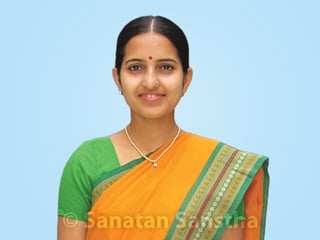
 Sewing Clothes and Effect of Stitching
Sewing Clothes and Effect of Stitching Practical suggestions on Wearing Clothes
Practical suggestions on Wearing Clothes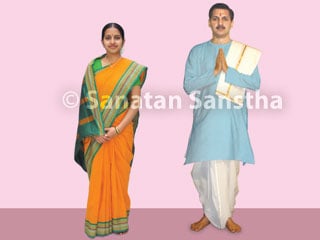 Why do we wear clothes ? and Importance of wearing Sattvik Clothes
Why do we wear clothes ? and Importance of wearing Sattvik Clothes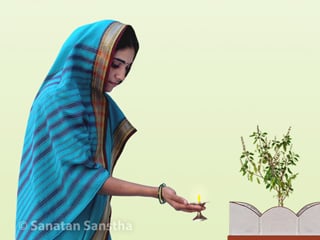 Significance of taking saree pallu (free end of the saree) over head
Significance of taking saree pallu (free end of the saree) over head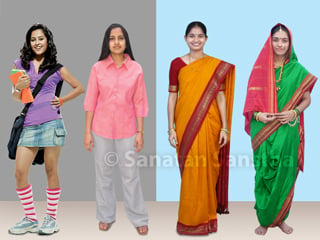 Subtle effect and Importance of dress worn by a woman
Subtle effect and Importance of dress worn by a woman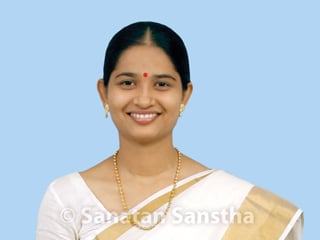 Subtle effects of different neckline patterns of a garment worn by women
Subtle effects of different neckline patterns of a garment worn by women